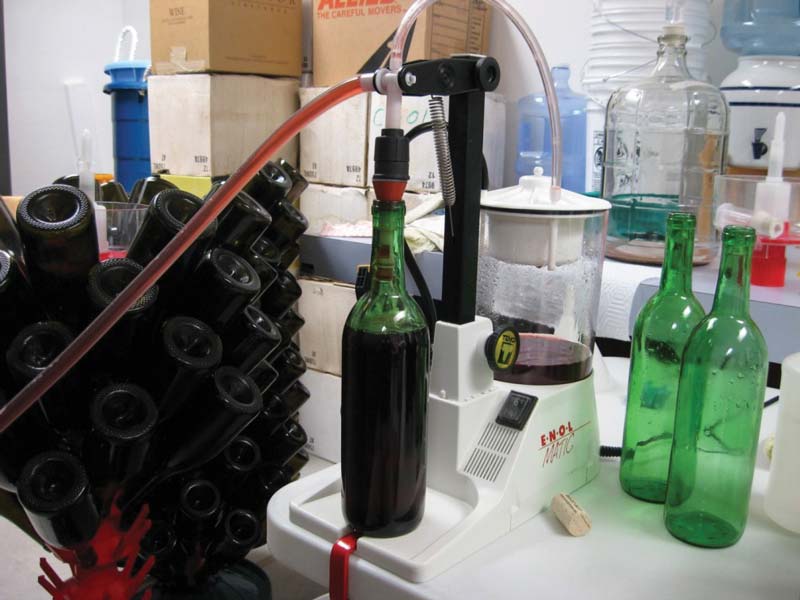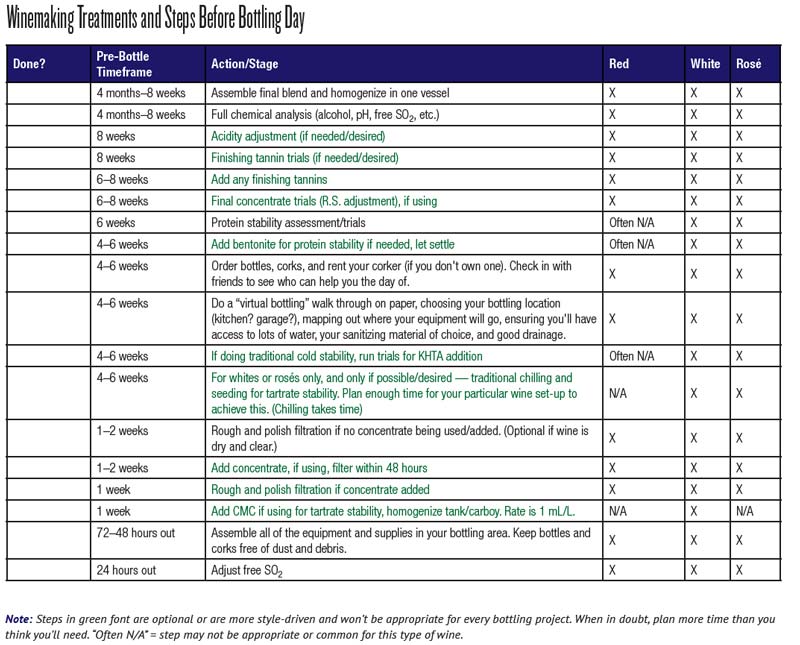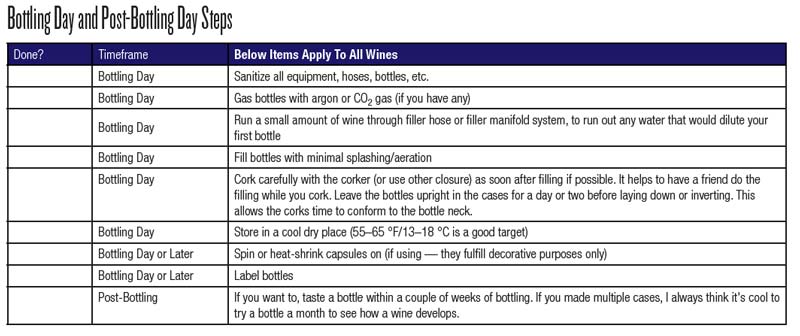
I totally get it! There are some great articles about bottling in the WineMaker article archives at www.winemakermag.com. Though it’s a topic my fellow authors have covered before, I certainly can still give you some of my own insights as well as a checklist which is based on what I use when I’m prepping to bottle my own wines at Plata Wine Partners in Napa, California.
The first step is to determine when it’s time to bottle. Sometimes the wine just has to “do its thing” and you just have to pay attention. Since you’re dealing with a white wine like Chardonnay and it’s vintage 2021 (as I’m writing this, it’s the end of May 2022), chances are that it’s ready to go. Whites and rosés almost always need less aging time than reds, with unoaked styles (like Pinot Grigio) needing the least time.
All fermentations are complete
Unless you want bubbles appearing in the bottle later, make sure your wine is dry (I usually go with less than 0.2% residual sugar as the benchmark) and your malolactic fermentation (MLF) is either complete or has been arrested by adding a good dose of potassium metabisulfite (sulfite).
A lack of flaws
It should go without saying that the time to deal with any flaws or issues is before bottling. Wine that is too tannic needs more time or a protein-fining agent. Wine that is too sour needs to either a) finish MLF or b) be deacidified with potassium bicarbonate or potassium carbonate. Sometimes you can hide minor flaws by bringing in some other wine to blend. However, be careful of trying to hide a truly flawed wine by adding too much of your good stuff; I always say, “Never blend a loser.”
The wine is clear
Has the wine “fallen bright,” i.e. it’s not cloudy or turbid? If your Chardonnay is still hazy, try adding some bentonite or another fining agent to help drop out the solids. More on this later in this reply.
Flavors and aromas are developed
Wine that is bottle ready “smells like wine” (sorry, I know that sounds obvious) and not like an active fermentation. The oak that you may or may not have added should be smelling and tasting integrated, like it’s a natural part of the wine and not just “laying on top.”


The wine is stable
“Stable” may be somewhat subjective and is a term that definitely exists on a spectrum. For reds, what I mean by stable is that fermentation and microbial activities are all complete, the wine is clear, the flavors and aromas have developed as mentioned earlier, and importantly, no more solids are falling out of solution. Presumably the wines have been racked off heavy solids at least twice within the first six months of life or so. Keep in mind most commercial fine red wines are bottled with at least one year of aging, often with a good 18 months in barrel. White and blush wine bottling dates are a lot more subjective and their timelines vary quite a bit. Unoaked styles that rely on their freshness for their charm, like Pinot Grigio and most rosés, can be bottled very soon after dryness. With added fining to drop out lees and filtration for clarity, it’s possible to have bottle-ready dry white wine within three months or so of harvest. Chardonnays, I tend to find, take more time. They rely on time on lees and often on oak in order to get to a satisfying style that is varietally and traditionally correct, but we are still only talking about a matter of months.
It should go without saying that the time to deal with any flaws or issues is before bottling.
For whites and rosés, especially, stability also means heat and cold stability. I won’t get into it a ton here (because you can look up further references in my The Winemaker’s Answer Book, available at winemakermag.com /product-category/books) but a wine is considered heat stable (in rough parlance) if it doesn’t throw a haze when heated. A wine is considered cold stable if it doesn’t throw a precipitate of potassium bitartrate crystals when chilled. Different wineries have different chemical analysis standards for how they test and measure this, and for home winemakers it can be difficult to achieve. Getting a wine heat stable involves adding bentonite clay and racking the wine off of it. It may not be necessary if you are happy with the appearance of your wine, and you know that you’ll be able to store it in a cool environment.
In the past, it’s been especially difficult for home winemakers to achieve a level of commercial cold stability by chilling/freezing wine. Typical procedures include chilling a wine to 32 °F (0 °C) for 48 hours, seeding with cream of tartar, and then filtering the wine. It’s quite an involved process. Luckily there is a relatively new tool on the market that naturally inhibits crystallization in white wines, carboxymethylcellulose, or CMC. Now it might sound chemical-jargony but so does deoxyribonucleic acid (DNA).
CMC is a food-grade, water-soluble polysaccharide derived from cellulose that doesn’t change the pH, flavor, or aroma of wines. It blocks the nucleation site of seed crystals and restricts further crystal growth. It’s available in dried or liquid form from winery supply companies like Laffort or Scott Labs and is added at a standard rate of 1 mL/L (as with any winemaking tool, please read up on a supplier’s website for more detailed information). Just mix into wine that’s bottle ready and the chance that you’ll have crystals formed in wines later in its lifetime are dramatically reduced. A couple of caveats: It’s important for the wine to be heat stable (proteins removed with bentonite) before the addition of CMC or it may throw a haze. Similarly, CMC is not for use in pink or rosé wines because the colored compounds can create a haze.
I ran on way more about stability than I meant to but indeed, it is a huge topic! Good luck with your first bottling run.




